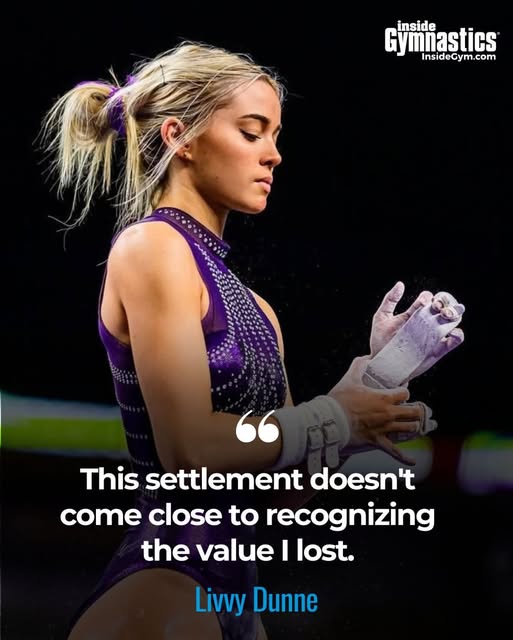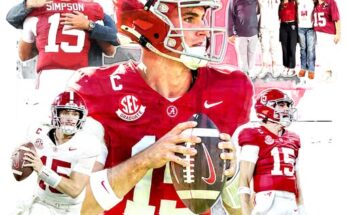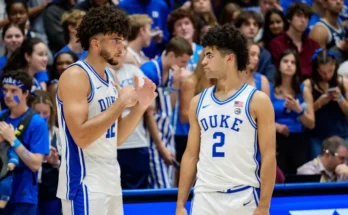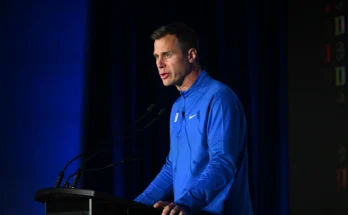LSU’s Livvy Dunne Challenges NCAA Settlement Formula, Ignites Debate Over Fairness in NIL Distribution
LSU gymnast and social media icon Livvy Dunne is once again at the forefront of change in college sports—this time not from a balance beam or viral TikTok, but from a courtroom. As reported by Athlon Sports, Dunne is leading the charge against the proposed multibillion-dollar settlement in the House v. NCAA case, raising serious questions about the fairness and future of Name, Image, and Likeness (NIL) compensation in collegiate athletics.
In a Monday hearing, Dunne officially objected to the settlement terms, specifically the formula used to determine how much each athlete would receive under the proposed $2.8 billion in damages. The settlement, meant to resolve a landmark antitrust case against the NCAA, could redefine the structure of amateur athletics. But for Dunne, and potentially hundreds of other high-profile athletes, the issue isn’t just about a payout—it’s about principles, fairness, and recognition of what today’s student-athletes bring to the table.
While the NCAA has agreed to the massive financial settlement, the details of how the money will be distributed remain contentious. According to Dunne, the proposed formula does not adequately consider athletes who have leveraged NIL opportunities independently. In her case, she has become one of the most successful collegiate athletes in the NIL era, reportedly earning millions through brand deals, endorsements, and social media content. Yet under the current settlement framework, much of that independent success is ignored or undercounted.
At the heart of the House case is the idea that the NCAA illegally restrained athletes from profiting off their own name, image, and likeness before recent rule changes allowed them to do so. The $2.8 billion in damages is intended to compensate former athletes for revenue they might have earned in a world where NIL was legal and regulated. But now that NIL is a reality—and athletes like Dunne have broken barriers by becoming financially successful while competing—the settlement’s logic is being tested.
Dunne’s objection raises a deeper, more philosophical question: Who gets to decide the value of an athlete’s brand, and how should that value be compensated retrospectively?
In court filings, Dunne’s legal team argued that the formula used to determine damages unfairly penalizes athletes who have successfully navigated the NIL landscape on their own terms. It favors athletes in revenue-generating sports such as football and basketball, where television contracts and ticket sales dominate, while athletes in sports like gymnastics, swimming, or track and field—who may have a massive online presence or endorsement potential—are often left behind.
For example, while a football player who started during the pre-NIL era may receive a significant portion of the settlement due to their role in a televised sport, a gymnast like Dunne—despite her millions of followers and brand partnerships—might be allocated significantly less under the formula simply because gymnastics doesn’t produce the same kind of broadcast revenue.
This perceived imbalance is at the core of Dunne’s challenge. To her and others, the settlement risks perpetuating the same inequality it seeks to remedy: valuing athletes not for their individual marketability or contributions, but for the sport they play and the dollars that sport brings in for schools.
This controversy comes at a critical moment for the NCAA, which is already navigating a rapidly shifting college sports landscape. Since the Supreme Court’s Alston decision and the introduction of NIL rights, the traditional boundaries of amateurism have been eroded. Schools, conferences, and governing bodies are scrambling to keep up with the evolving definitions of fairness, compensation, and equity.
The House settlement was seen by some as a way to draw a line in the sand—to resolve past grievances and establish a forward-looking framework. But Dunne’s objection demonstrates that the line may be far more complicated to draw than anyone anticipated.
Moreover, the public nature of Dunne’s stance is significant. As one of the most visible athletes in the country, her objection doesn’t just carry legal weight—it resonates with a generation of athletes who have grown up in the NIL era. These athletes view themselves as more than just players or competitors; they are brands, entrepreneurs, and influencers. And they expect to be compensated accordingly.
Dunne, who has appeared in campaigns for brands like American Eagle, Vuori, and Forever 21, has helped reshape how athletes engage with their audiences and monetize their identities. She’s not just a gymnast; she’s a marketing powerhouse. Her willingness to challenge the NCAA settlement publicly and in court could embolden other athletes in non-revenue sports to advocate for fairer treatment in future negotiations.
The implications of this case—and Dunne’s role in it—could ripple far beyond LSU or gymnastics. If the court takes her objection seriously and revisits the formula, it could open the door for a broader rethinking of how athlete value is defined. That, in turn, might influence future NIL policies, collective bargaining efforts, or even how schools distribute revenues internally.
Critics of Dunne’s stance argue that the settlement is a necessary compromise—an imperfect but essential step toward righting past wrongs. They worry that too many objections could derail the process or delay payments to athletes who never had the chance to profit from NIL. But to Dunne and her supporters, settling for less than what’s fair isn’t justice—it’s just a continuation of a flawed system under a new name.
There’s also a broader concern: if high-profile athletes like Dunne are dissatisfied with the settlement, what message does that send to the rest of the athletic community? Does it suggest that the NCAA is still unable—or unwilling—to recognize the full spectrum of athlete value in the modern era?
Dunne’s objection highlights the growing divide between the NCAA’s old-school model of amateurism and the new reality of athlete empowerment. For decades, the NCAA controlled the narrative and the purse strings. But today’s athletes are more informed, more connected, and more powerful than ever before. And they’re not afraid to challenge the status quo—even in court.
As the legal battle unfolds, one thing is certain: Livvy Dunne has already made an impact. Her willingness to stand up against the proposed settlement, to call out what she sees as an unfair formula, adds yet another chapter to her already remarkable legacy. Whether or not the court adjusts the terms, Dunne has sent a message that echoes far beyond gymnastics mats and courtrooms.
She has reminded everyone—from administrators to fans to fellow athletes—that the fight for fairness in college sports is far from over. And she’s made it clear that athletes in every sport, regardless of how much TV time they get, deserve to have their voices heard and their value recognized.
As LSU continues its athletic dominance across multiple sports, it’s fitting that one of its most influential athletes is now leading a different kind of charge—one that could shape the very structure of college sports for years to come. From viral videos to legal filings, Livvy Dunne is proving that impact isn’t limited to scoreboards. Sometimes, it starts with standing up and saying, “This isn’t fair. We deserve better.”
The NCAA may have hoped that the House settlement would close the book on years of tension over athlete compensation. But thanks to Dunne, it appears that book is still wide open—and the next chapter is just beginning.



